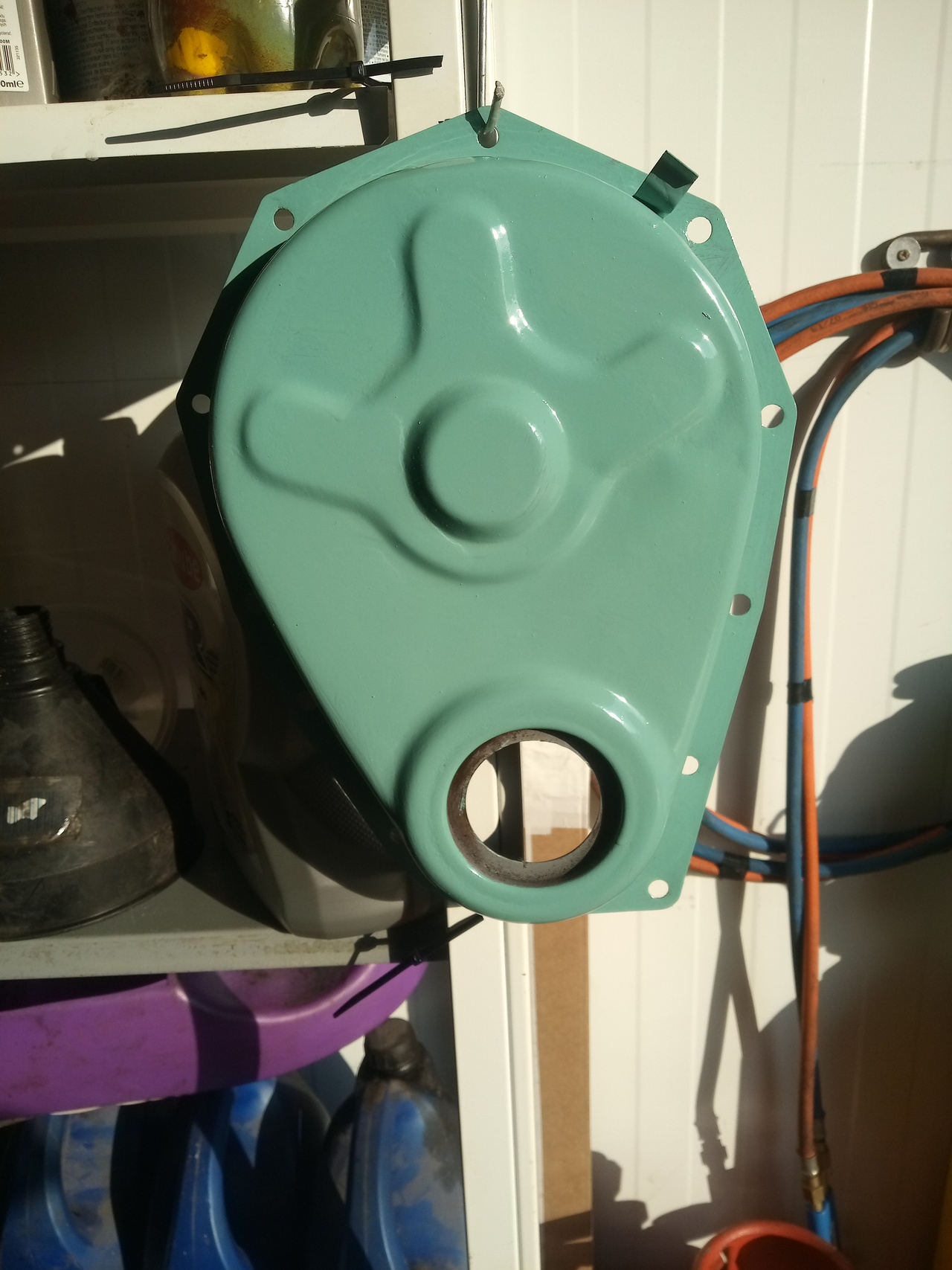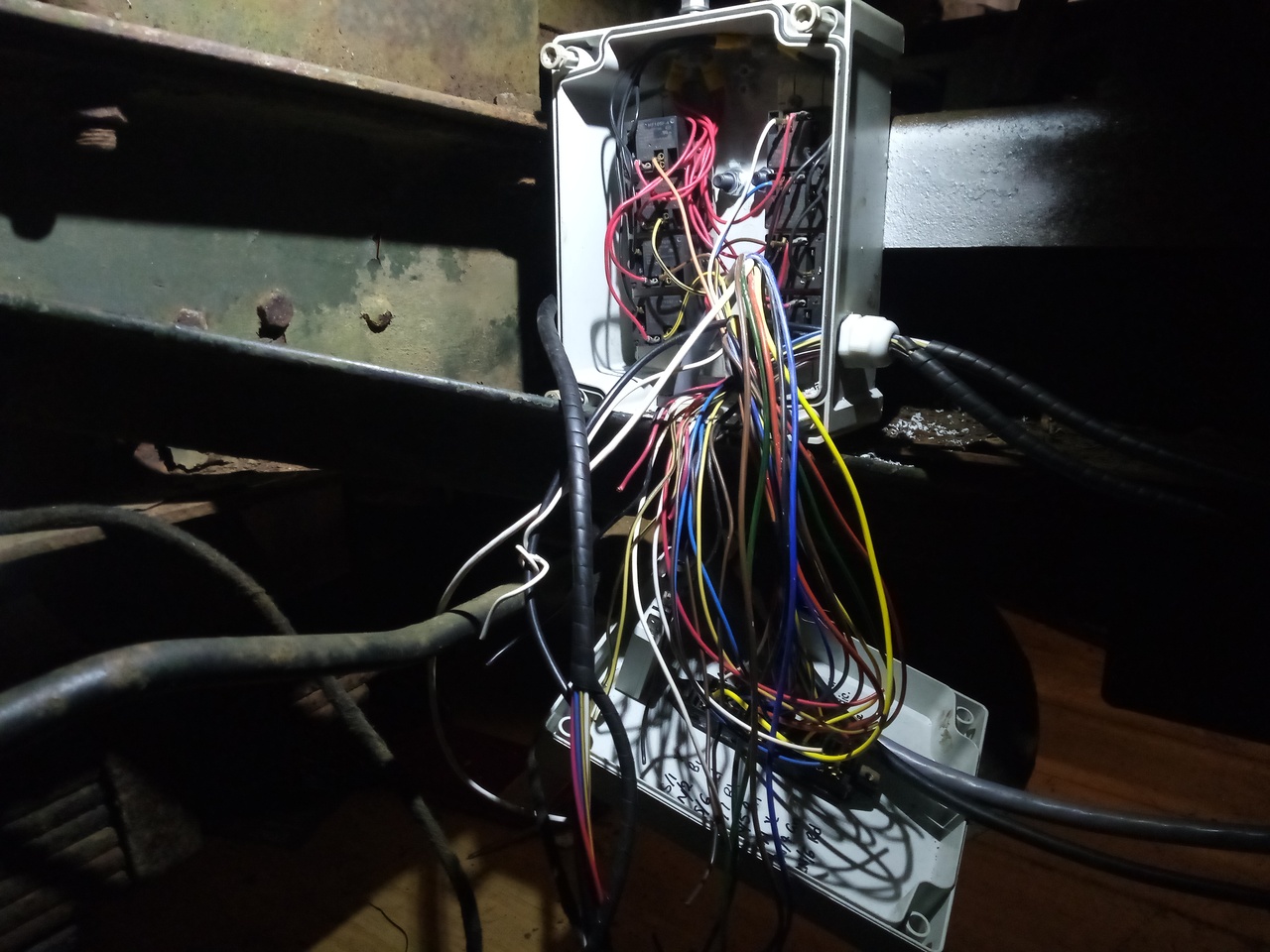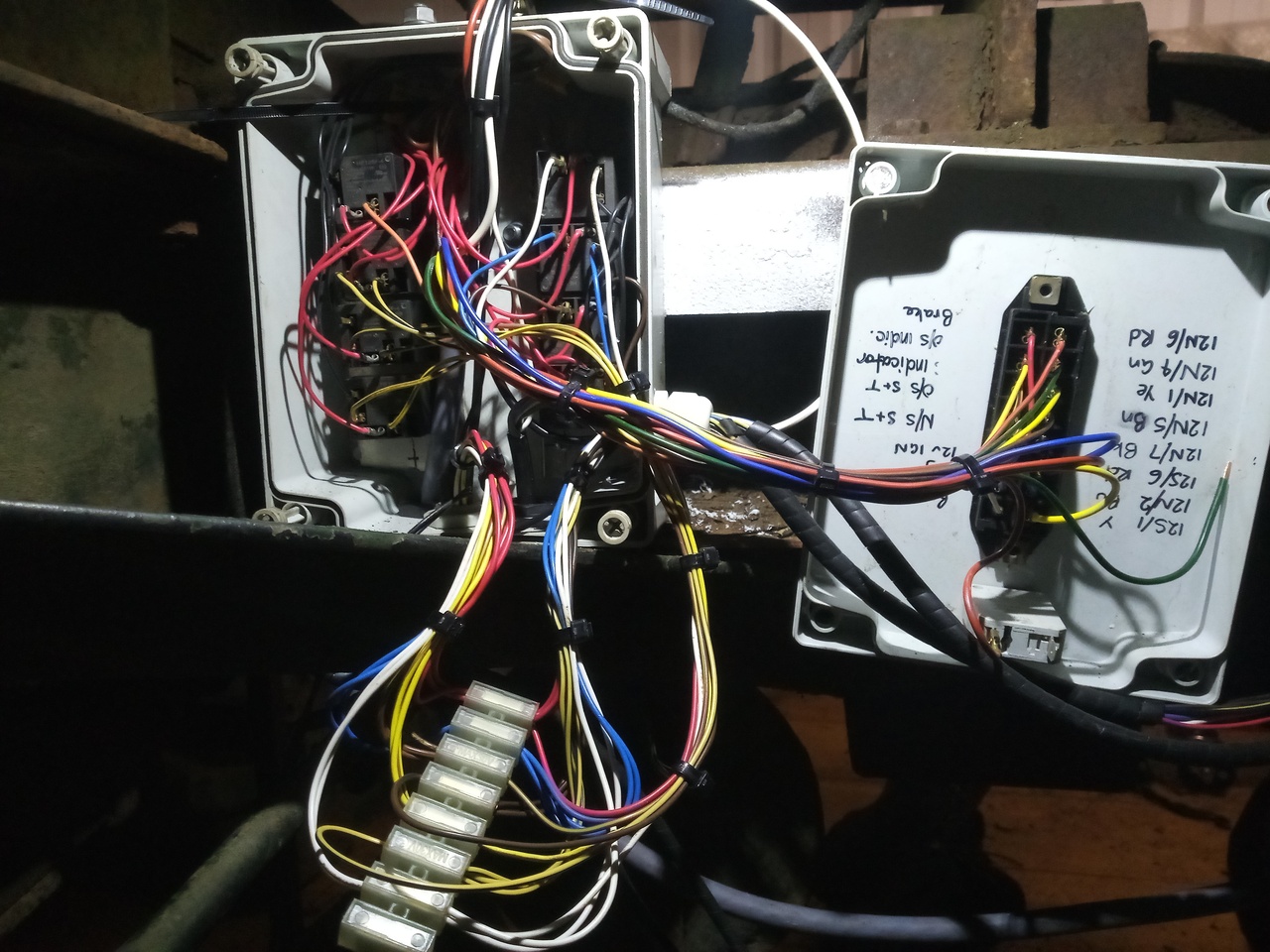
Seems a little dark, compared to the remnants of what was already on the engine, but I'm going to keep on with it. Additionally, I have made some progress on re-wiring the back lights, now with an additional 4 or so years of experience since I did it the first time and with things having changed slightly!
The original design had the wiring to each rear light cluster pass down its respective side of the truck. That was fine, but if I were to do it now, it'd all pass down one side then split at the rear cross-member. But, no, I'm going to just have to put up with it doing a bit of a loop around both sides of the truck, to all come together at an adaptible box only to fan back out again.
Cables all fed in...

And wired up to the various relays and fuse-holders. (Aside from the switched ignition feed for triggering the relay, and a battery feed power wire out to the circuit-breaker. And a big length of battery cable to bring power down to the box from all the way up at the front! Oh, and a couple of nice ground cables to the chassis, one here and one up near the battery, because it turns out that my new rubber cab mounts do a real good job of insulating the cab from the chassis electrically!)

Looks a little over the top, but I don't think it is.  It's doing the same job as any other one of those
"smart relay" jobbies, but also providing a place for me to connect
all of the back lights, too.
It's doing the same job as any other one of those
"smart relay" jobbies, but also providing a place for me to connect
all of the back lights, too.
kevins
As long as you keep a good diagram for fault finding I don't think you can overdo updating wiring with relays and fuses, most of the original switches in the 60's were barely up to the job in the first place let alone with some modern accesories like lights and a heater that actually works, I vividly remember hotwiring the lights on my anglia on the side of a german autobahn in the late 80's after the switch melted!
Definitely; I've got a pile of notes and diagrams that I'm going to finalise into a few proper diagrams (laminated!) that can be stored in the truck for when the inevitable happens. :D
And the original wiring was about what was to be expected from the
era, with full load current going through every switch and a grand
total of 4 fuses. The replacement fuse & relay board is rather more
comprehensive -- though, as it's been about 3 years since I first
built it, there are some changes and rework I would like to do because
I'm not entirely happy with how I did it first time, now. At least
it's easy to take it out and make those changes, because it's on two
plugs and two flying battery leads. 
I do have some slight concern now and again over how a single fuse --
the one supplying the switches -- blowing basically switches off the
whole truck, but it's realistically no worse than losing the wire off
the back of the ignition switch, or a battery terminal coming lose, or
whathaveyou. Guaranteed to happen at the worst possible time,
though. 
Vehicle electrics and electrical products have come on a long way
since these things were first built. Which is a good thing, as far as
I'm concerned! Long gone are the days of every switch needing to be
rated to 30A, and running headlights through a cable that needs to
dive in through the dashboard and a hard-worked switch before heading
out to the lamp itself... 
I've got upgraded headlights -- though they're still halogen -- in the Bedford, using 70W H4 bulbs in retrofit 7" headlight units, replacing the old sealed beams; shouldn't be much worse than a modern halogen truck headlight, and still looks pretty original. The rear lights are pretty standard multi-functions that are definitely a bit newer looking, but have been fitted onto damn near everything since ... well, I don't know when, but they feel like they've been around forever, and since they're still so popular and parts are so common for them, I feel it's a good option that doesn't look too out of place.
A side note on convoluted tubing/kopex/whatever you want to call it,
if you're running loose wires inside it anywhere: over time, if
there's lots of vibration (say, it's fitted on a motor vehicle ), the convolutions can abrade the insulation on the
wires inside to the point that you can get random mystery
shorts. Takes the best part of a decade of daily hard use to reach
that point with side marker wiring along the chassis, though. (Oh, and
the edges of the split, if you're using split-loom, give no quarter on
insulation. Or fingers.)
), the convolutions can abrade the insulation on the
wires inside to the point that you can get random mystery
shorts. Takes the best part of a decade of daily hard use to reach
that point with side marker wiring along the chassis, though. (Oh, and
the edges of the split, if you're using split-loom, give no quarter on
insulation. Or fingers.)